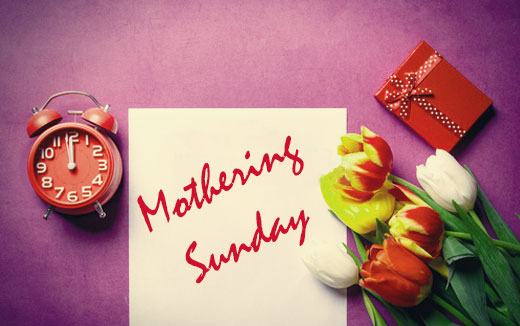England observed "Mothering Sunday", or the "Mid-Lent-Sunday", on the fourth Sunday in Lent. It is quite identical to the modern celebrations.
Some historians say that there are reasons to believe that the Mother Church was substituted for Mother Goddess by the early church. And this is why it became customary to visit the church of your baptism on this day. Some say the ceremonies in honor of ancient Roman god Cybele were adopted by the early church to venerate the Mother of Christ, Mother Mary. People attended the mother church of their parish, laden with offerings.

When her mother died in Philadelphia on May 9, 1905, Anna missed her greatly. So did her sister Elsinore whom she looked after as well. Anna felt children often neglected to appreciate their mother enough while the mother was still alive. Now, she intended to start a Mother's Day, as an honoring of the mothers. In 1907, two years after her mother's death, Anna Jarvis disclosed her intention to her friends. So, supported by her friends, she started a letter-writing campaign to urging ministers, businessmen and congressmen in declaring a national Mother's Day holiday. She hoped Mother's Day would increase respect for parents and strengthen family bonds.
Also in England, the custom began for those working away from homes to return to their homes on Mothering Sunday with small gifts, or, mothering cakes for their mothers. However, no one is certain about exactly when the custom began.
Of having every Mid-Lent Sunday celebrated as a day of family feast and get-together is reported to be a tradition during the 17th century.
According to John Brandt, it was customary in the 18th and the early 19th centuries, for all those working away from home to be given a holiday to return to their own place. Back home they presented their mothers with a cake and little nosegays of violets and other wild flowers gathered in the hedgerows as they walked along the country lanes. Whole families attended church together and there was a dinner of roast lamb, or veal, at which mother was treated as queen of the feast. And everything was used to be done to make her happy.
The custom of Mothering Sunday became more widespread during the 19th century.
Amongst the customs was a practice of going to see parents, and specially the female ones. While going to the parents' place children
would take for them some little present, such as a cake or a trinket. Any youth engaged in such act of duty was said to go
'amothering'.
They day was celebrated with a festive mood appropriate to that day. The prominent dish was called furmety. It was a dish of wheat grains boiled in sweet milk, sugared and spiced.
In the northern part of England and Scotland there had been a custom of having steeped pease fried in butter, with pepper and salt. Pancakes so prepared passed by the name of carlings. It was so popular that from it Carling Sunday became a local name for the day.
The mothering cake also went by the name of simnel cake. This was a very rich fruit cake, the richer the better. For, the Lenten fast dictated that it must keep until Easter. First boiled in water and then baked, it sometimes had an almond icing. At other times the crust was of flour and water, colored with saffron. The word simnel comes from the Latin simila, a high grade wheat flour.
The customs of the Mothering Sunday in England started to decline with the changing pattern of the society following the Industrial Revolution.